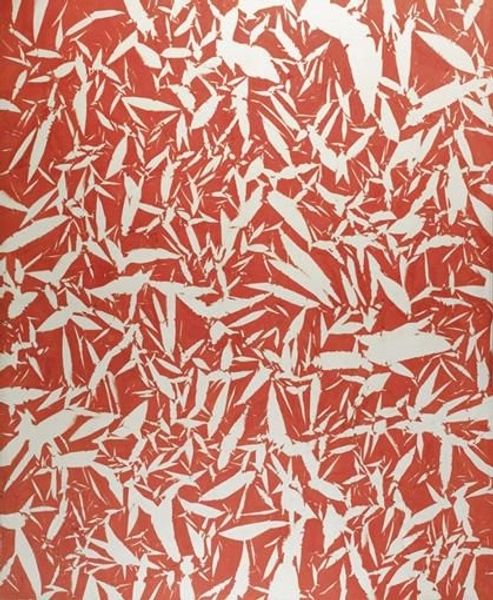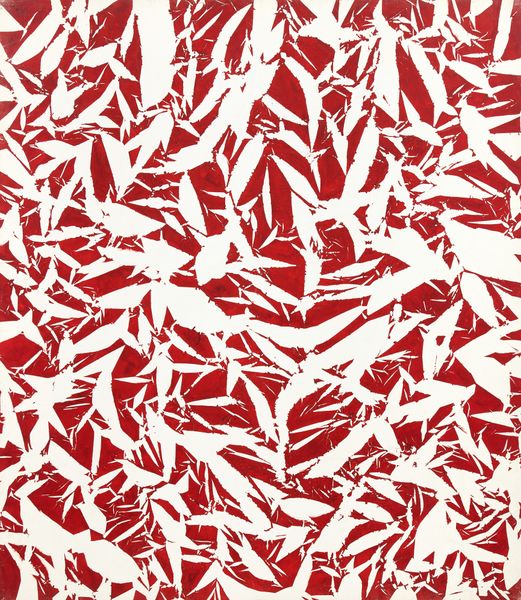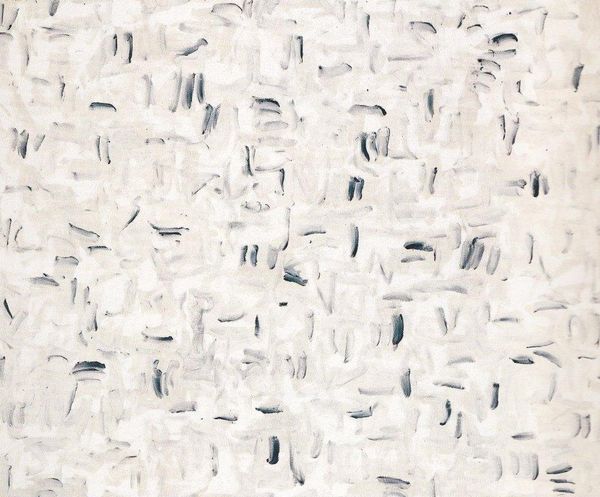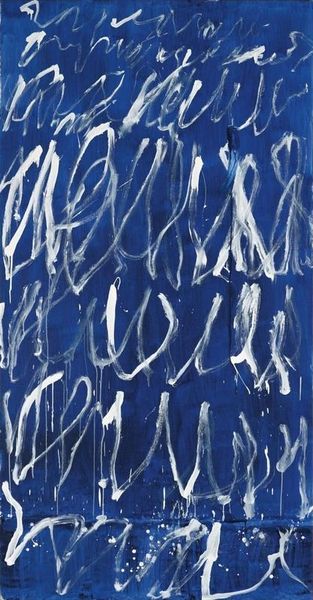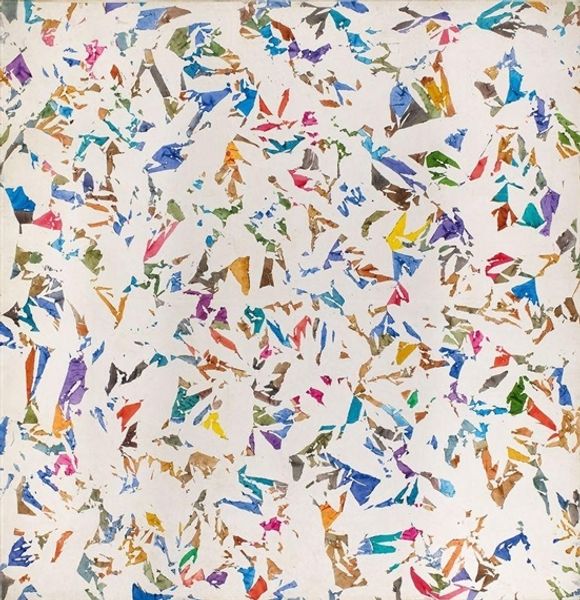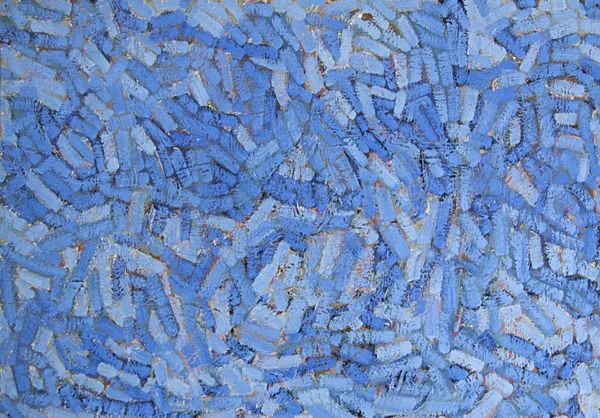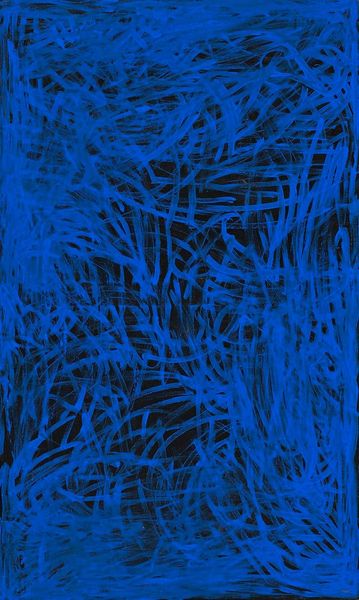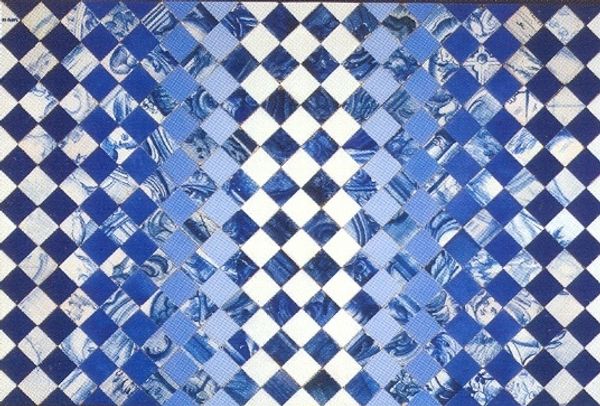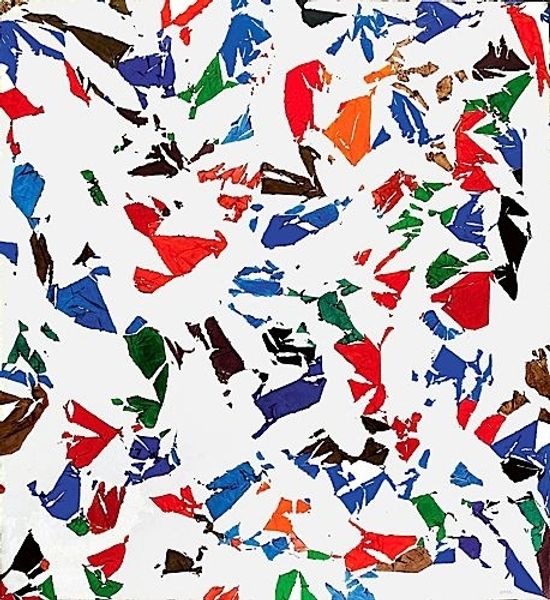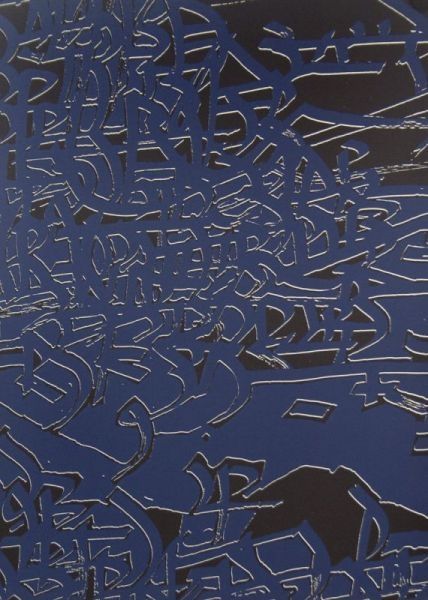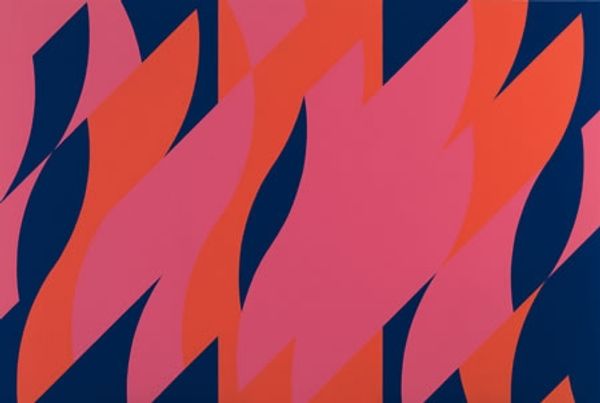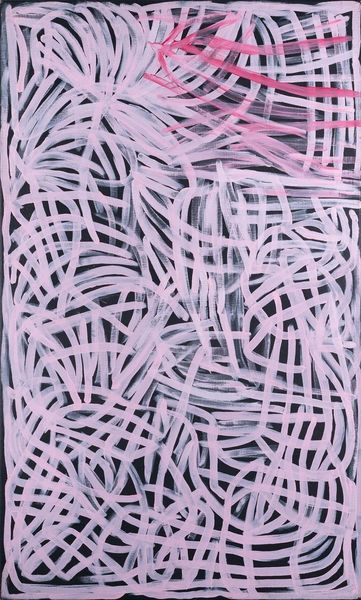
acrylic-paint
#
acrylic-paint
#
abstraction
#
allover-painting
#
modernism
Copyright: Simon Hantai,Fair Use
Editor: So, here we have Simon Hantai's "Study" from 1969, created using acrylic paint. It's an all-over composition, with striking blue and white shapes. There's something almost frantic about the repetition, and I find it really draws my eye across the surface. What do you see in this piece from your perspective? Curator: What I see first is a reflection of post-war anxieties expressed through abstraction. Consider the cultural context: this piece emerges in a period of significant social upheaval. Hantai, as part of the Parisian avant-garde, engages with a rejection of traditional painting techniques, challenging the very idea of artistic creation. Do you think the "frantic" feeling could be a conscious artistic statement? Editor: Absolutely, it makes perfect sense that the visual rhythm communicates that moment in time! The way the colors interact and almost vibrate creates a kind of unease. This all-over painting resists a focal point. Does the lack of hierarchy connect with the social movements of the time? Curator: Precisely! It reflects a desire to dismantle artistic hierarchies and elitism, a common thread in much art of the time. How might the embrace of abstraction serve a social purpose, considering Hantai’s personal history as a Hungarian émigré in Paris? Editor: Maybe abstraction served as a way to speak beyond language barriers or political constraints. It's powerful to think about how seemingly non-representational art could be such a loaded social statement. Curator: Yes, and recognizing those connections encourages us to consider how institutions like galleries play a critical role in shaping our understanding of abstract art and the power of such works to impact their context. Thanks, I really appreciate that thought, too.
Comments
No comments
Be the first to comment and join the conversation on the ultimate creative platform.
